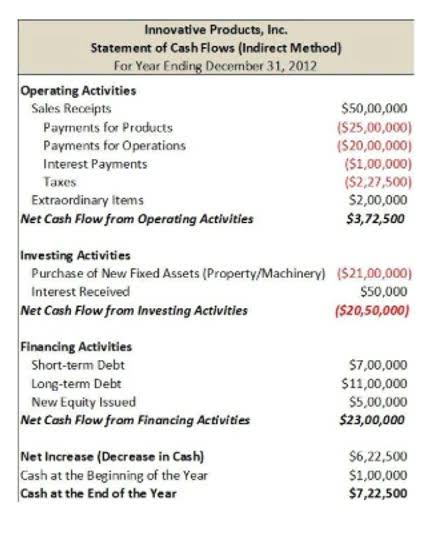Meanwhile, shares are the company’s obligation to shareholders; their value is recorded in the shareholders’ equity section of the balance sheet. The owner of a convertible debenture has the right to convert the loan into shares of the issuing business under the conditions set out in the debenture certificate. A debenture can also be partially convertible, which means part of its value can be converted into shares and cash. These debentures are secured by a charge on the company’s assets.
- The maturity date is an important feature of nonconvertible debentures since it directs the date on which the company must repay debenture holders.
- SmartAsset does not review the ongoing performance of any RIA/IAR, participate in the management of any user’s account by an RIA/IAR or provide advice regarding specific investments.
- A debenture is a form of security that a Company grants to a lender in exchange for funding.
- Similarly, investors lend money to companies and governments through debentures, trusting they’ll get the funds back.
- A Debenture is a type of debt security that companies use to raise money from investors.
Nonconvertible debentures are those that can’t convert into stock. Because they don’t have this extra perk, they often come with a higher interest rate. Companies are willing to pay a higher rate because these bonds don’t dilute the company’s stock by turning into shares. On the due date, the company has two general choices of repayment of principal.
They are not secured by collateral, yet they are considered risk-free securities. The relative lack of security does not necessarily mean that a debenture is riskier than any other bond. The downside for https://quickbooks-payroll.org/ the borrower is that they have little financial flexibility because the interest payments are compulsory. And, if they cannot repay the loan, they may suffer other losses, as outlined in the indenture.
Create a Free Account and Ask Any Financial Question
In the US, most debentures are unsecured, but elsewhere debentures are typically secured through the borrower’s assets. The debenture itself is not the loan, but it is the security document that https://accountingcoaching.online/ accompanies the lending. A loan without a debenture, or alternative form of security, is an unsecured loan which usually means the lender has no ability to take control of the company’s assets.
- Normally the maturity period is longer than the other sources of finance.
- Thus, a shareholder is a participant in the profits as well as losses of the company but a debenture holder is paid interest over the lifetime of the debenture and principal amount at the end of life.
- Credit card companies loan borrowers money, even though they don’t put up collateral.
- However, they are not backed by physical assets or any other collateral.
US Treasury bonds, for example, are debentures that are considered virtually risk-free, as the US government backs them. A secured bond is backed by collateral, such as a property or equipment. An unsecured bond, like a debenture, doesn’t have any collateral backing it up. Investors rely only on the trustworthiness and credit rating of the company or government issuing the bond.
What is a creditor and what does being a creditor mean?
The cost of raising capital through debentures has become very high due to the high stamp duty. These kinds of debentures can be moved https://personal-accounting.org/ by performing normal transfer deeds. Perpetual debentures are redeemed as per mutual consent or at the time of liquidation.
Security Requirements
A debenture is a financial instrument issued by a company that signifies its debt obligations to the holder. Businesses exploring potential equity conversion may lean towards convertible debentures. Any transfer of ownership requires a formal process, including updating the company’s register of debenture holders.
Great! The Financial Professional Will Get Back To You Soon.
Apart from pure non-convertible debentures, debentures can also be converted into equity shares at the option of the debenture holders. The conversion ratio and the period during which conversion can be affected are specified at the time of the issue of the debenture itself. The convertible debentures may be fully convertible or partly convertible. In particular, convertible debentures lure investors who, if they think the company’s stock will ultimately rise, wish to convert to equity. A caveat, though, is that compared to other fixed-income investments, debentures pay a lower interest rate. While corporations use debentures as long-term loans as well, they are unsecured here.
Best Internal Source of Fund That Company Could Benefit From (Example and Explanation)
This is different to unsecured facilities, where the lender does not have any ability to take control of the company / its assets. A debenture is one of the tools available to lenders to secure their interest and as such usually companies have no option but to agree to issue a debenture in order to secure the funding they want. If a company is looking to acquire a trading premises, as opposed to leasing its premises, it may not necessarily have the funds available to buy suitable premises outright. Much like a private individual obtaining a mortgage, the company can approach banks and other appropriate lenders to take a loan to acquire the property.
Ownership and voting rights:
Credit rating agencies, such as Standard and Poor’s, typically assign letter grades indicating the underlying creditworthiness. The Standard & Poor’s system uses a scale that ranges from AAA for excellent rating to the lowest rating of C and D. Any debt instrument receiving a rating lower than a BB is said to be of speculative grade. It boils down to the underlying issuer being more likely to default on the debt. When debts are issued as debentures, they may be registered to the issuer. In this case, the transfer or trading in these securities must be organized through a clearing facility that alerts the issuer to changes in ownership so that they can pay interest to the correct bondholder.




